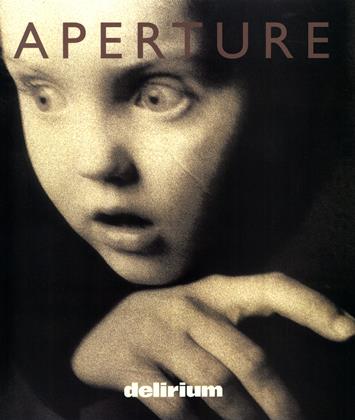Editor's Note
Aperture
"There is not art without intoxication. But I mean mad intoxication! Let reason teeter! Delirium! The highest degree of delirium! Plunged in burning dementia! Art is the most enrapturing orgy within man's reach." –Dubuffet
Summer 1997 The EditorsAPERTURE
Editor's Note
“There is not art without intoxication. But I mean mad intoxication! Let reason teeter! Delirium! The highest degree of delirium! Plunged in burning dementia! Art is the most enrapturing orgy within man’s reach.” —Dubuffet
Guest edited by W.M. Hunt, this issue of Aperture features work by photographers and scientists in their efforts to capture delirium on paper. Images ranging from contemporary through 19th Century show how delirium, clinical or colloquial, has been documented, analyzed, codified, worked over, and wondered about for the last 150 years, together creating a psychic agitation that can be as dark as it is witty. Artists include Nancy Burson, Debbie Fleming Caffrey, Ellen Carey, Henri Cartier-Bresson, Sally Mann, Robert Mapplethorpe, Eugene Richards, Weegee, and many others.
Here, terror looks like ecstasy, stupor looks like pleasure, innocent joy like panic—and vice versa. Moving sinuously through various states of mind and body, as well as from the objective to the subjective, from the specific to the abstract, the strange, idiosyncratic, sometimes other-worldly, sometimes frightening images comprising “delirium” are unnerving as they almost toy with our sense of things. Images that might otherwise feel benign and eminently normal are, in this evocative context disquieting, yet somehow magical.
In a 1972 issue of Aperture, editor Minor White asked: “What would we see in photographs if we could look at them in contemplation? Catalysts at best....” Like a photographic Rorschach test, “delirium” provokes questions about what is actually in these pictures, and what we may be projecting on them, revealing the continuing power of the photograph to incite and fuel our imagination and psyche.
The Editors
Subscribers can unlock every article Aperture has ever published Subscribe Now
The Editors
-
 Editor's Note
Editor's NoteAperture
Spring 1986 By The Editors -
 Editor's Note
Editor's NoteAperture
Spring 1993 By The Editors -
 Back
BackObject Lessons
Fall 2013 By The Editors -
 Object Lessons
Object LessonsJonna Kina’s Foley Objects, 2013
Fall 2016 By The Editors -
 Object Lessons
Object LessonsSelf-Portrait By Chief S. O. Alonge, Benin City, Nigeria, Ca. 1942
Summer 2017 By The Editors -
 Editor's Note
Editor's NoteWe Make Pictures In Order To Live
SPRING 2023 By The Editors
Editor's Note
-
 Editor's Note
Editor's NoteAperture
Spring 1994 -
 Editor's Note
Editor's NoteNotes
Spring 2004 -
 Editor's Note
Editor's NoteWestern Spaces
Spring 1985 By The Editors -
 Editor's Note
Editor's NoteThe Body In Question
Fall 1990 By The Editors -
 Editor's Note
Editor's NoteSpecimens And Marvels: William Henry Fox Talbot The Invention Of Photography
Winter 2000 By The Editors -
 Editor's Note
Editor's NoteAmerican Destiny
Spring 2017 By The Editors






